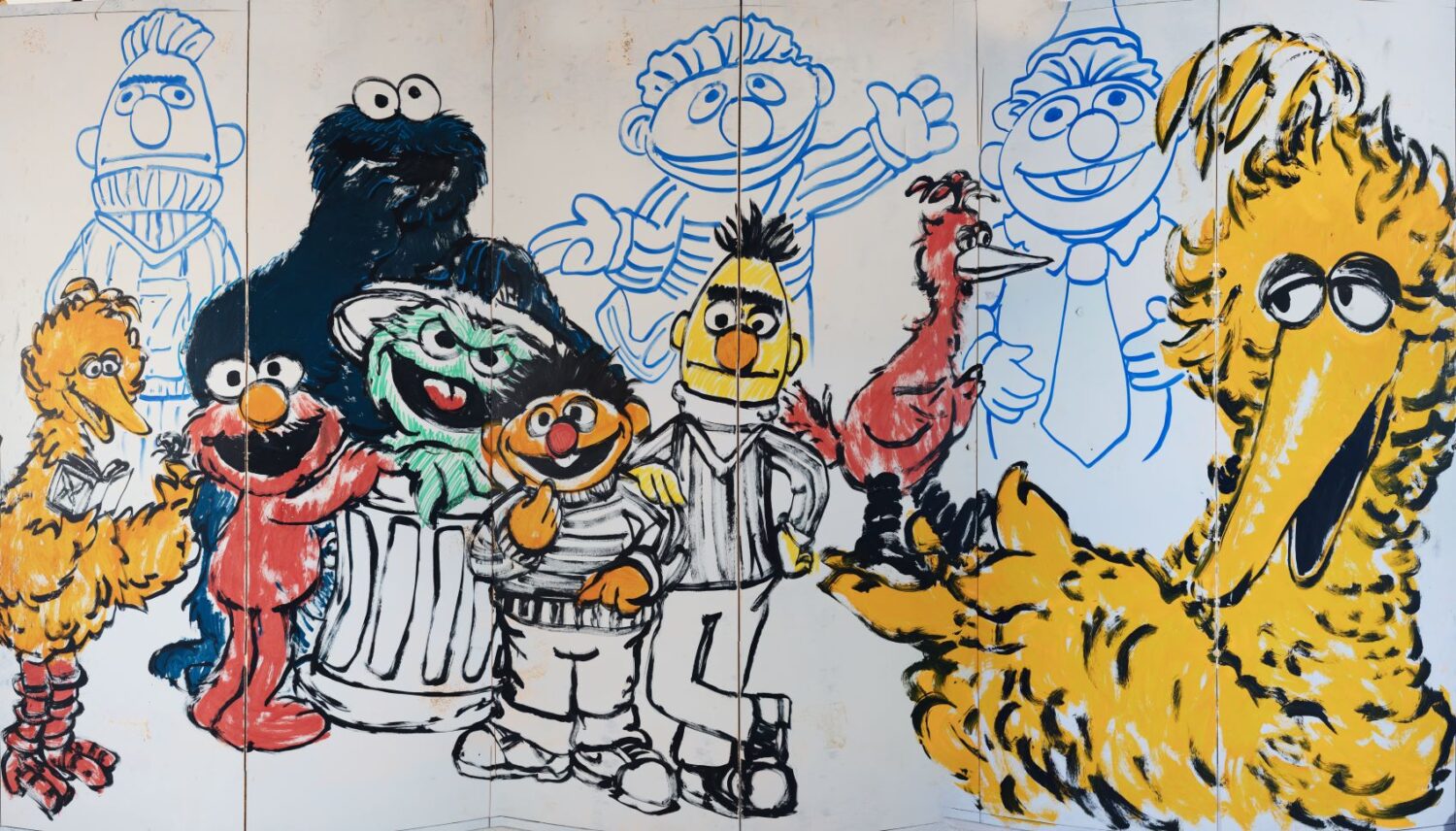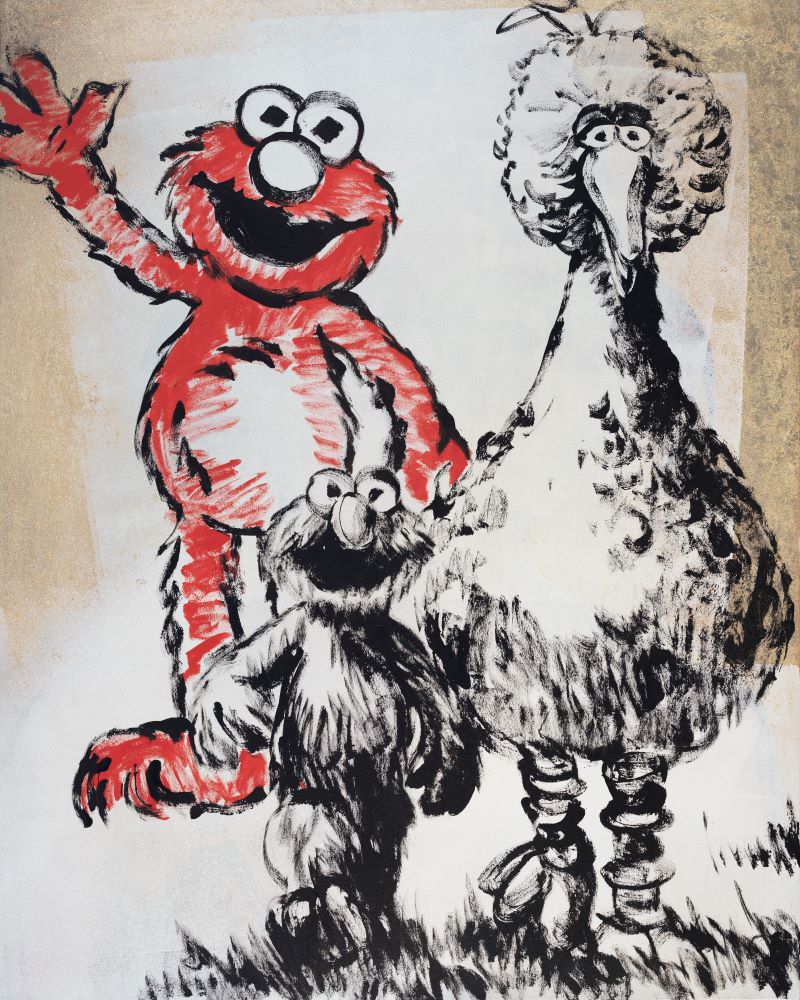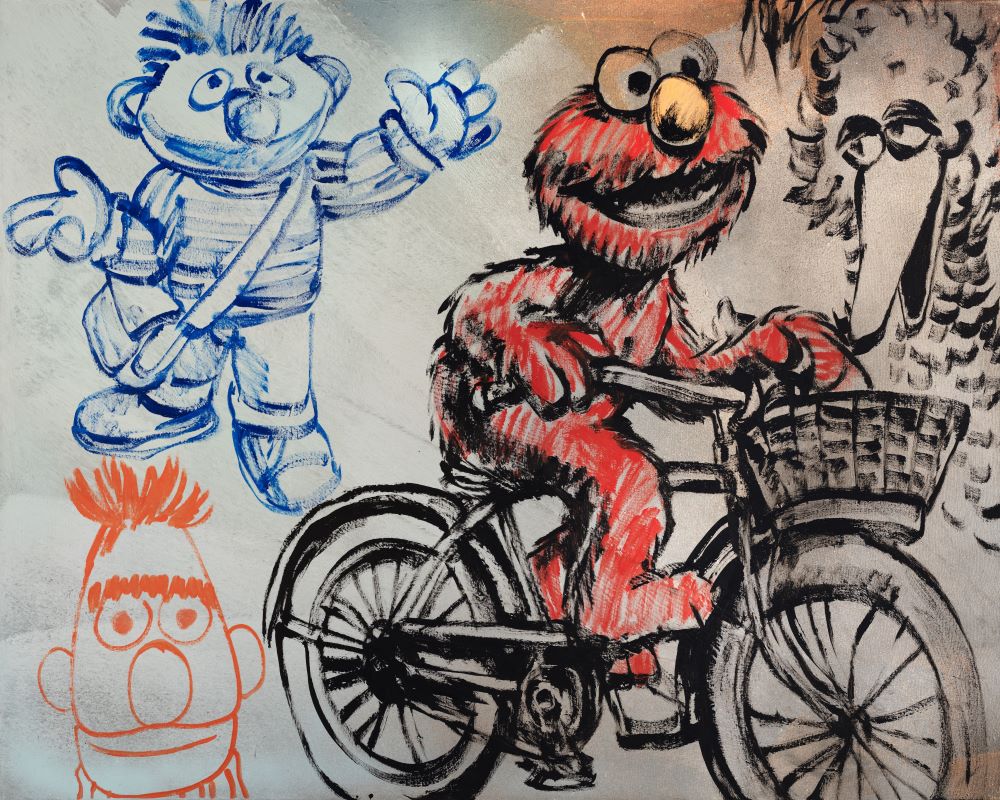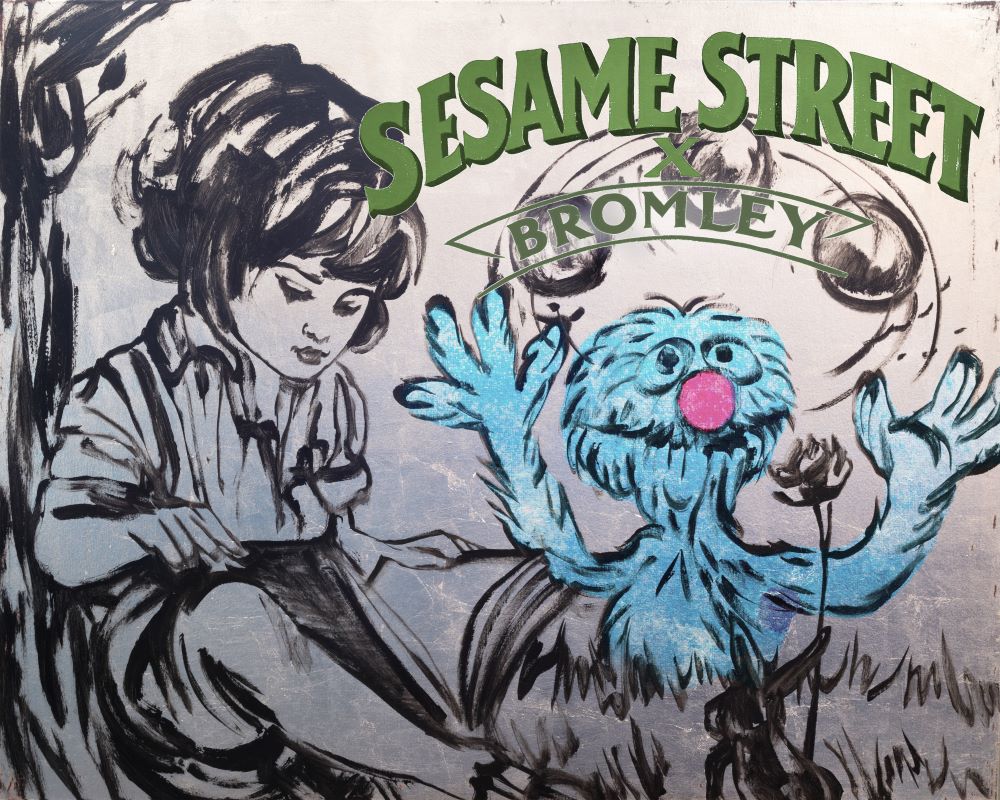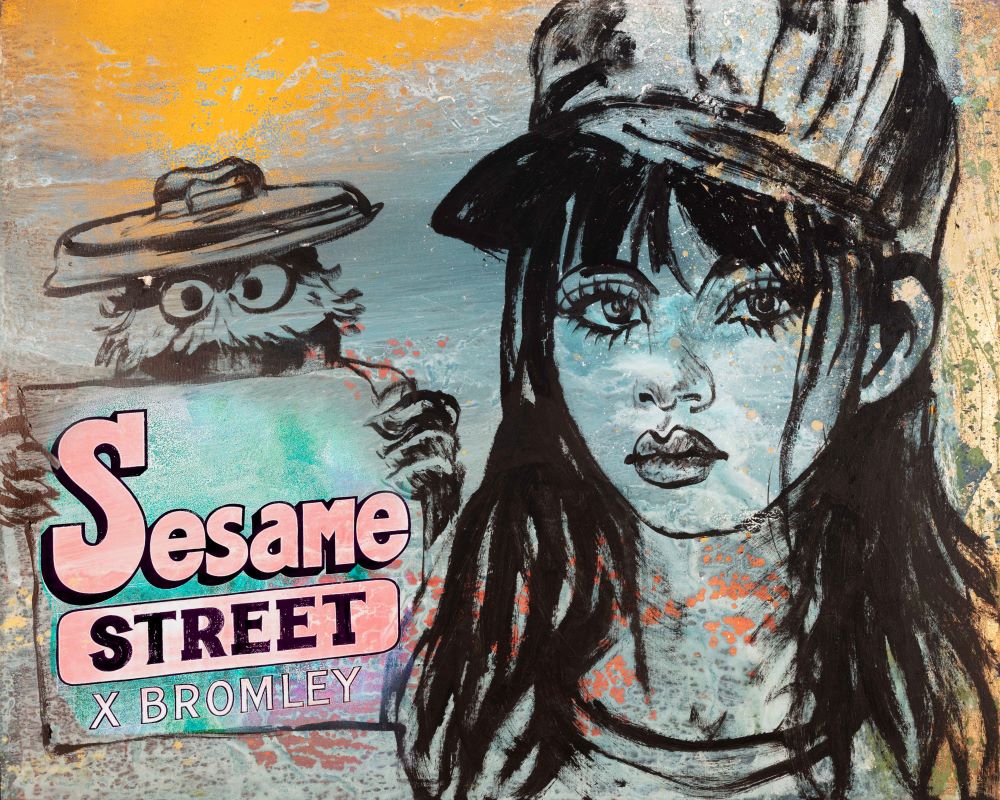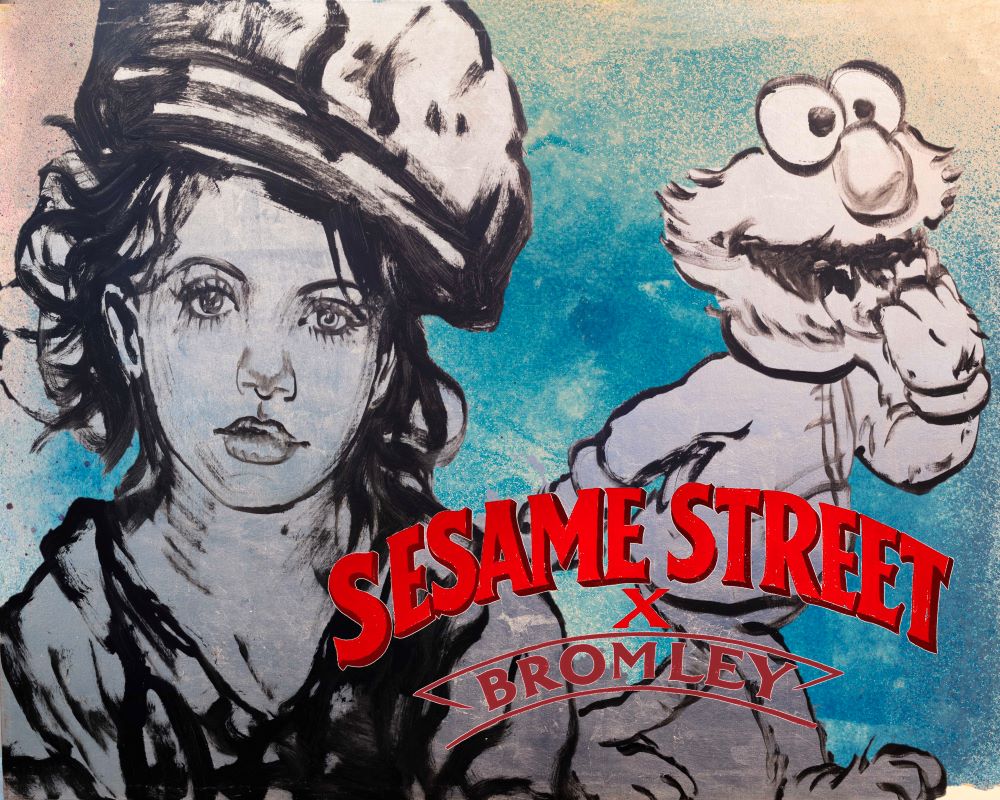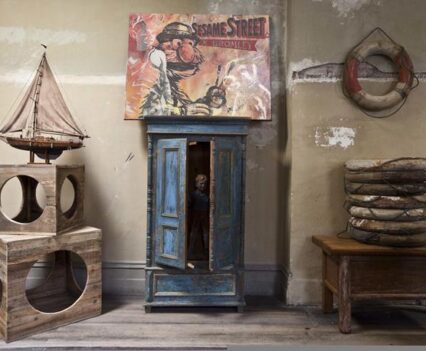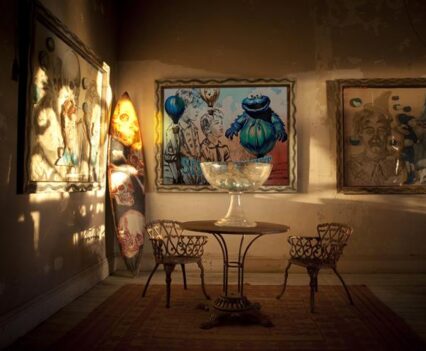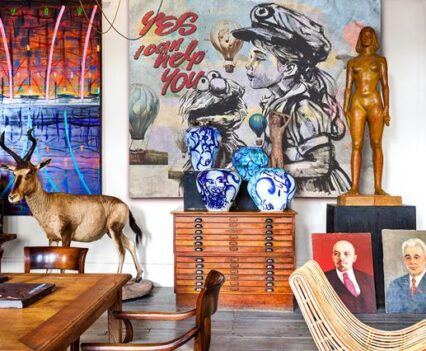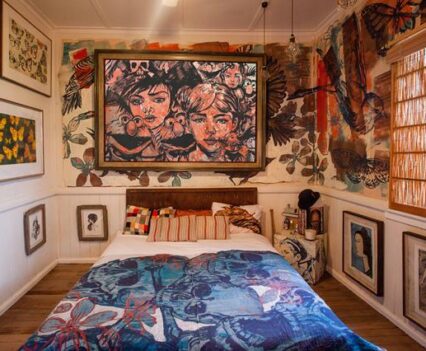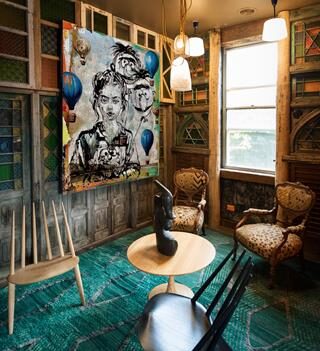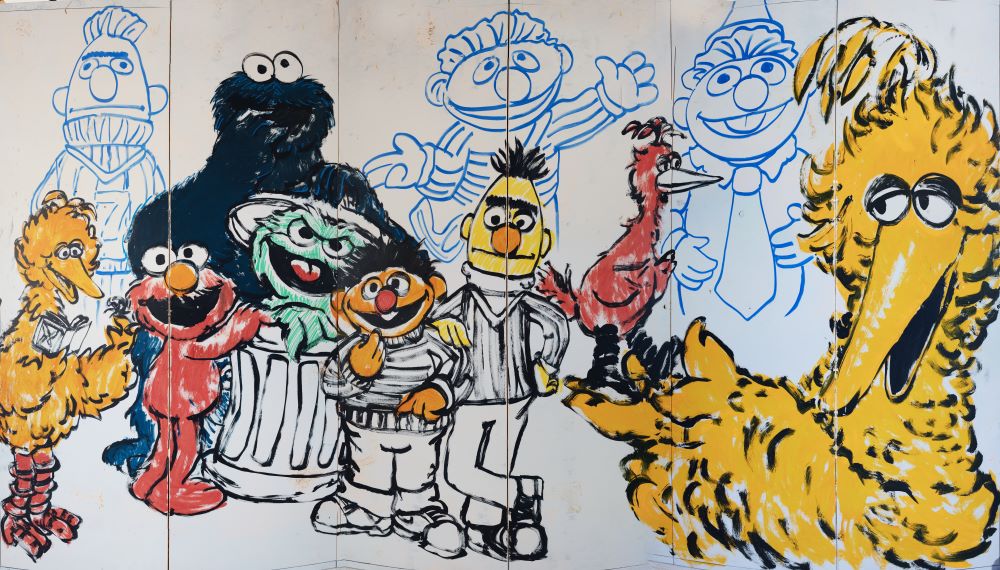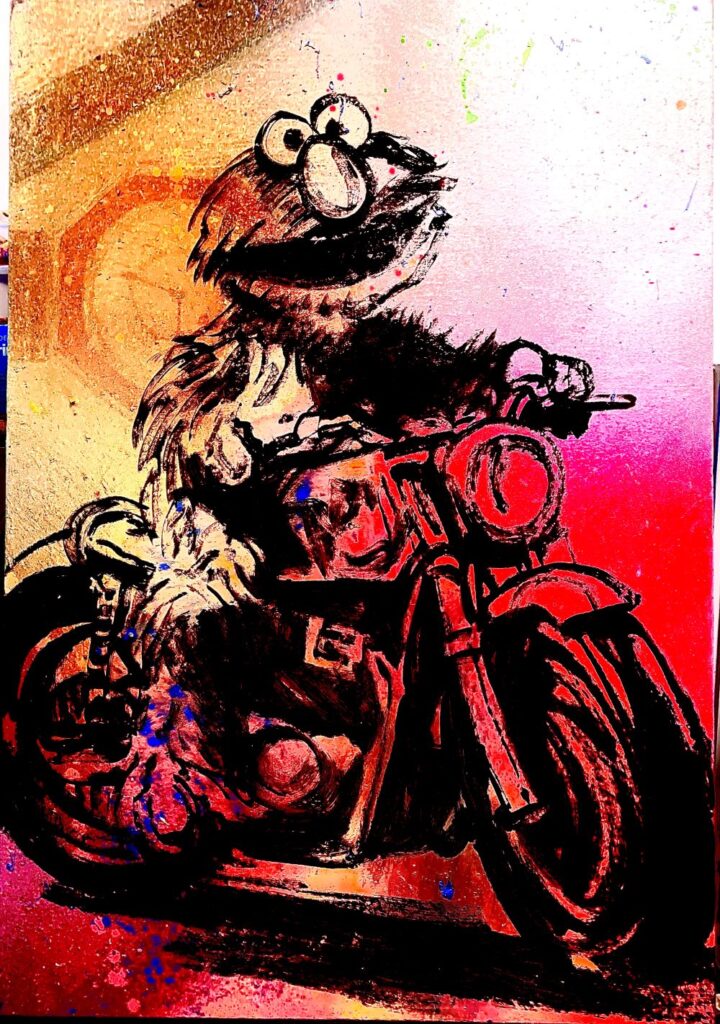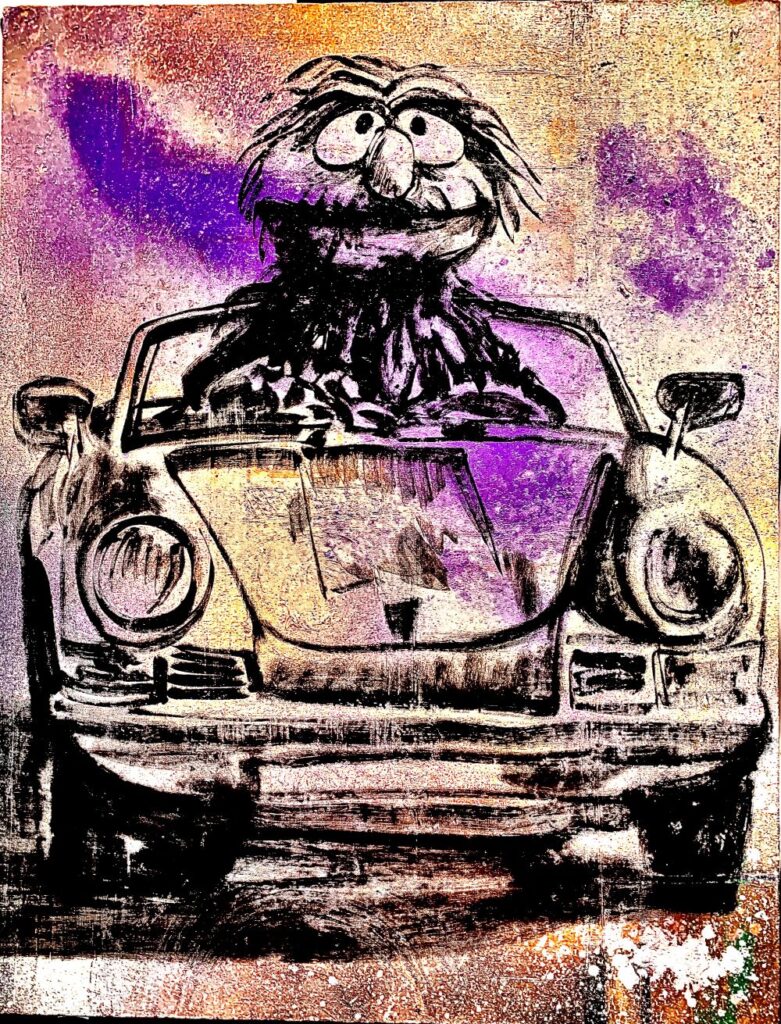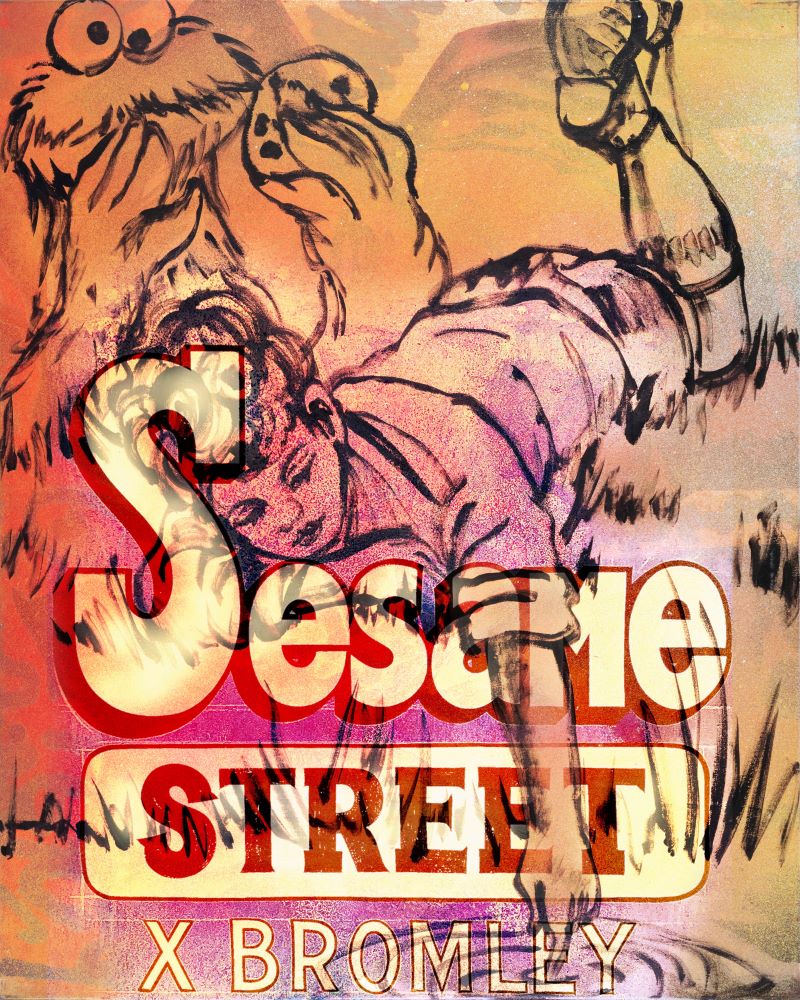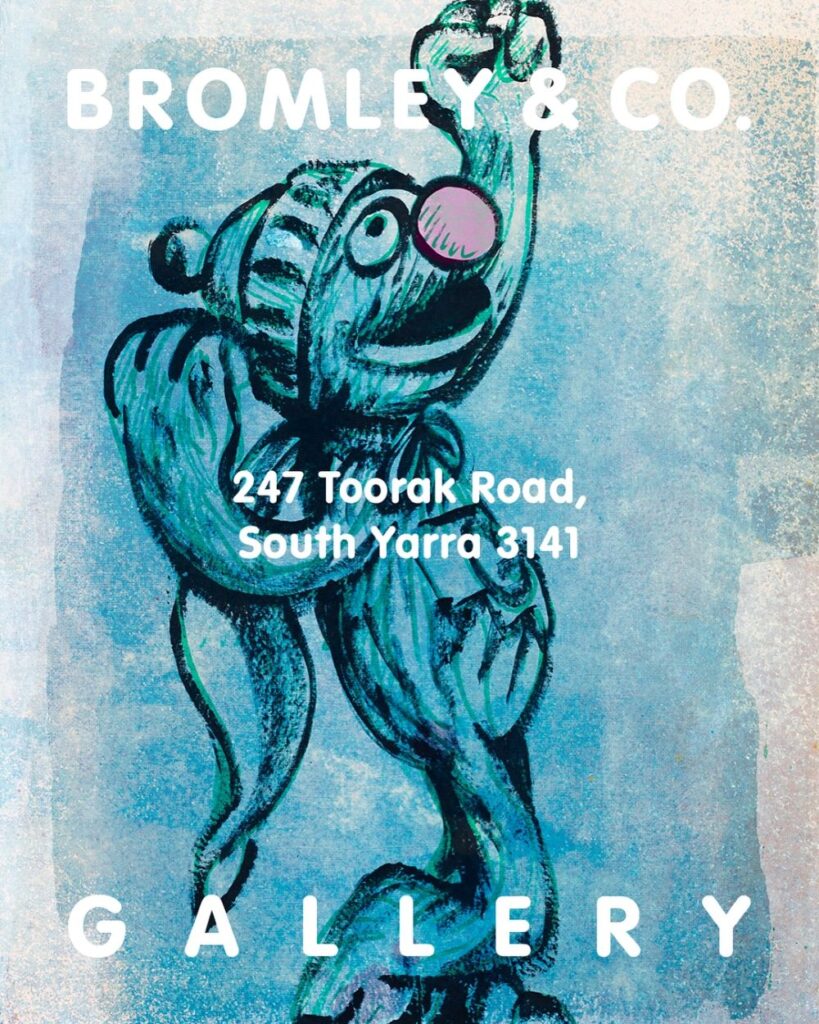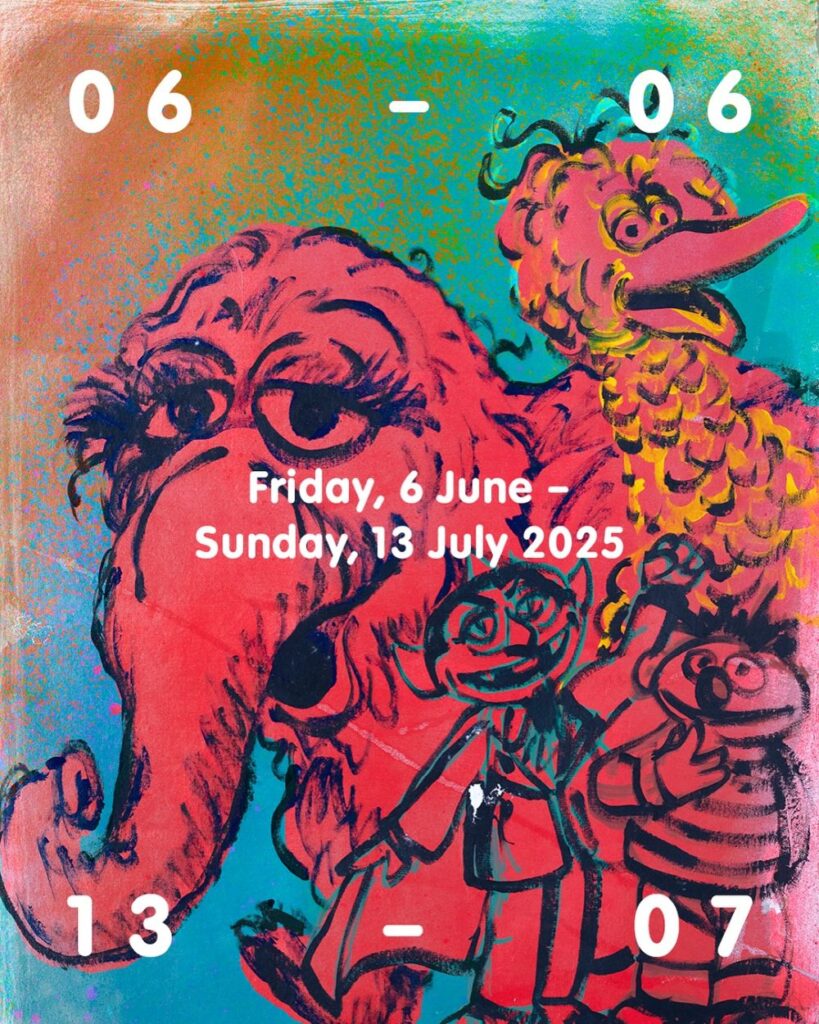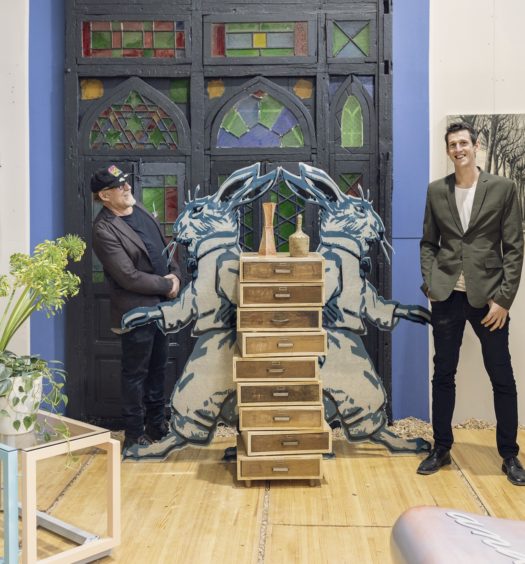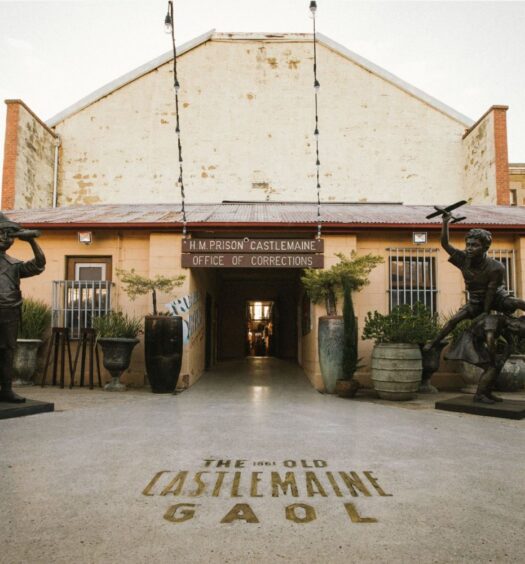As the much-anticipated Sesame Street x Bromley… In Your Neighbourhood Exhibition prepares to open on Friday June 6, we share the story, written by artist David Bromley on the heartwarming beginnings of his relationship with the iconic children’s series. Talking openly, in his engaging style, from the heart, he shares how the collaboration first took shape, where it all began, and the creative journey that combined two iconic names, Sesame Street x Bromley.
I often find that when it comes to something I’m deeply fascinated with and particularly at the start of a collaboration when I am pooling ideas together, there is a bit of a mix between manic and calm. It is a kind of frenzy to start with, images appear in my head and before all components are organised (in this case, with the powers that be with Sesame Street in New York), I am already metaphorically running down the creative road with my wife Yuge – I’m making art, throwing pots with Graeme Richardson, starting to sculpt, working in fibreglass, bronze, steel and looking at fashion.
In relaying the story, I was talking into my phone as we drove into Melbourne from home in Daylesford, because our life is so extremely full on… we have so much on and for want of a better word or words, we are so time poor. I come from a time when you either wrote something on a typewriter or simply scribbled notes on paper, so talking into a phone is somewhat strange and clumsy but I can’t write in a car as I get motion sickness. I do though write how I speak, so in some ways talking into a phone does seem like a great way to just let the words flow. Normally when we travel to Melbourne from our country home we listen to podcasts and it is quite relaxing. As said, we are time poor, so to be on the road listening to podcasts has many great qualities… we relax… we learn… and by the time we hit the city we feel renewed and are often fascinated by a story about someone that is frequently full of surprise.
However, on this day, I knew I needed to get my story to this wonderful publication so instead of listening to a podcast, Yuge drove and I fought to get the phone to record my words in notes which just turned into a surreal bunch of words that it was impossible to gain any understanding from, so here I am now repairing the jumble to see if a small story about Sesame Street can be salvaged from me yelling at my phone for 45 minutes!
A good start, or I should say another start… (I once wrote three introductions to a talk but on the night still had no further content. In those days I drank and thankfully the evening was sponsored by Moet & Chandon so as the night went on and the champagne flowed the remaining content also flowed!). So getting back to the start, a great way to have ‘started’ would have been to introduce you to Eddie Zamitt. Eddie Zamitt is the lovely fellow who introduced me to Sesame Street and told me the wonderful news that they were, as he had suspected more than interested in exploring a full bodied collaboration which I am now deeply entrenched in and excited no end to be involved in. It’s a real pinch myself moment and ideally this excitement will be imbued in everything I create – my love for the characters and diverse mediums, artistically bringing Sesame Street + Bromley to life in a way that I feel does justice to their charm and iconic longevity, so that these characters that have formed part of our lives are no longer fantasy characters but more real, more relatable, almost ‘realer than real.’
To be able to use art to represent Sesame Street is a very fortunate opportunity. I think it suits my work and from the first time I saw it, I’ve been completely enchanted, almost as if I felt like a better person for having Sesame Street in my life! And now already well on the way with painting, sculpture, screen printed fashion, wood carvings, fibreglass sculptures, bronze sculptures, different materiality from steel to puppet like characters in large scale form timber, ceramics and giant blow ups… which takes me to what I would ultimately love to make for Sesame Street… hot air balloons, I’ll get back to introducing you to Eddie, who beyond making the introduction will stay with Yuge and I to help grow all things Sesame Street!
David Bromley: Eddie, when did your fascination with the creative elements of a popular culture and its influence on society begin?
Eddie Zammit: Since childhood, I’ve always been fascinated by pop culture. Jim Henson has consistently been an inspiration, using analogue techniques to bring our imaginations to life. What I love about the brands and characters Henson created is the way they stick with us into adulthood. Most people around the world recognise Big Bird, Cookie Monster, and Ernie & Bert. Beyond their looks, we connect with their emotions. We know Big Bird is friendly, Cookie Monster is larger than life, Ernie is mischievous, and Bert is introverted. How? Emotional awareness. These characters have become iconic because they remain true to their personalities over time. In a word overflowing with creative content, Sesame Street has been the cornerstone of children’s imaginations globally.
DB: I mean this is the most complimentary way. I had a professional relationship with articles Charles Blackman for some years, and like you, he didn’t just paint characters like Alice In Wonderland; he embodied them. If you let your imagination wander, you could say he truly sat at the Mad Hatter’s table and ventured down the rabbit hole. This is where I see a strong comparison with you, Eddie. You’re not just an observer; you dive deep. I know that despite some people’s scepticism, you’ve spent time at the Sesame Street studios in New York and formed genuine friendships there.
EZ: My mum always told me, “If a job is worth doing, do it well.” I like to think that I over-deliver. Most of the projects I dive into, I become obsessed with. I dream big. Fifteen years ago, I had the incredible fortune of meeting Caroll Spinney (1933-2019), the legendary puppeteer behind Big Bird and Oscar the Grouch from 1969-2018. What I love is how he brought to life characters with such contrasting personalities. I met him on Sesame Street (where else?) and he was a true gentleman. He gave me a tour of Sesame Street and shared stories that very few people know. Besides his puppeteering, he was an illustrator, and his creative core is what drew me to him.
DB: It not just a surreal and imaginary world for you; you’ve entered it and, at times, become a part of it. How did Eddie Zammit make his way into this inner world?
EZ: I dared to ask the impossible – how do you get to Sesame Street? But I didn’t stop there; I backed it up with a pitch. I presented it in New York at Sesame Workshop via my good friends at Haven. Despite being told countless times that that visiting the set was out of the question I ended my original pitch by saying, “I was told getting on Sesame Street was impossible. Is it?” After seeing my pitch and passion, they drove me to the set in Queens that very afternoon. About a year later, they invited me to the closed set to witness the behind-the-scenes- magic of creating an episode of Sesame Street. This time, I bought along Nicole Reed, one of my favourite photographers in the world. She captured the moment, and stood at the back, listening to the seasoned crew, while I sat excitedly at the front. This is where I met Debra Spinney. Debra introduced me to Caroll – and the rest is history. In 2019, I curated the official 50th anniversary of Sesame Street in Australia. The artwork from that exhibition has since toured the world.
DB: You are a truly unique individual. What drives you, and what are the foundations that define you?
EZ: If I’m going to do this for the rest of my life, I want to make it interesting. I love a creative challenge and exceeding expectations. The thrill of the unknowns drives me. I’ve spent over 25 years navigating obstacles. Now, it’s time to use my experiences and explore the possibilities ahead.
DB: We share so much in common. What do you think makes is understand each other so weel, and why did you choose us to portray Sesame Street?
EZ: I think we’re just big kids seeing what we can get away with. You have three traits I admire: longevity, originality, and quality. You create imperfect perfection. Sesame Street is also from your era, your childhood. You were about nine when it first aired. I love that nearly everything you do has an analogue approach, just like Sesame Street was created. Your only limit is your imagination.
DB: What other creative worlds do you inhabit?
EZ: I use art in all its forms to elevate my projects. My experience in art direction, curation, and design allows me to push artistic concepts forward for clients. I believe that “art creates culture,” a conviction that drives my work. Consider places like Hobart without Mona or New York without graffiti – they vividly illustrate the impact of art. Throughout my career, I’ve art directed over 1,200 publications, curated 25+ exhibitions in the past decade alone, and collaborated with 500+articles, including Shepard Fairey, Jeremy Fish, Mike Giant, and Reg Mombassa.
DB: You are a designer of some note in your own right and have also collaborated with other iconic characters, how is Sesame Street different?
EZ: Sesame Workshop is the most famous non-profit globally. It’s astonishing that more people aren’t aware of its incredible legacy. Every dollar they earn goes back to children’s charities worldwide – an accomplishment that deserves recognition. Personally, Sesame Street holds a special place for me because it has heart. It’s not afraid to poke fun at itself while remaining deeply educational. I admire how Big Bird, for instance, helped my generation understand concepts like death. When the real-life Mr Hooper died, it was Caroll Spinney who suggested to write it into the script to teach children the emotion after someone close to you dies. I love that Sesame Street tackles critical social issues such as autism, homelessness and racism.
DB: How are you different?
EZ: At 50, I like to think I have the same energy and optimism I had in my 20s, 30s and 40s. For me, staying youthful is about the next creative challenge. I’m naturally competitive and believe in continually pushing myself to achieve more. Ultimately, my biggest competitor is always myself.
DB: How are we different?
EZ: Together we are the sum of all our strengths. You’re the artist. I am an art director/curator. Our roles complement one another. We are less different that we are the same. Our unique experiences make us different, yet each contributing to our collective success.
DB: What do you believe we can contribute to Sesame Street? It’s already such a magnificent platform. For us, collaborating with such a wonder is an incredible honour. The potential to create and build up its rich history and myriad stories is a dream come true for any artist.
EZ: One of the things that draws me to Sesame Street is their continual evolution. They’re always growing in characters, storylines, and ideas. I like that. Their ability to last 50 years shows true longevity, which I really respect. I think you’ll bring a fresh perspective to Sesame Street, particularly through your artistic vision. You’ll push their boundaries with art. Honestly, I hope you rock the boat.
DON’T MISS
Sesame Street x Bromley… In Your Neighbourhood
247 Toorak Road, SOUTH YARRA
Friday Jun 6 – Sunday Jul 13
Follow Insta @bromleyandco

